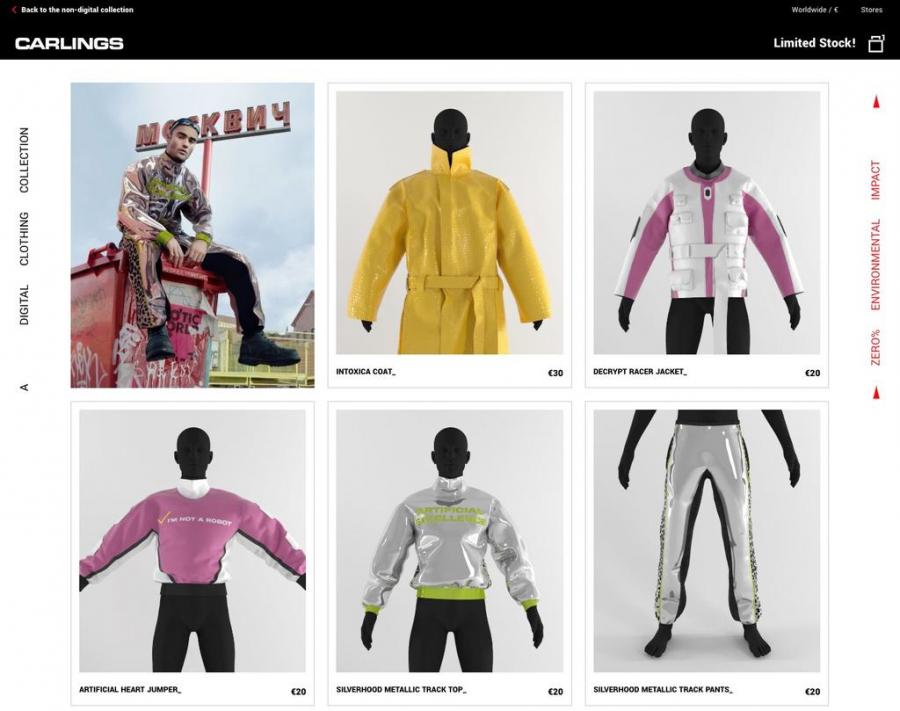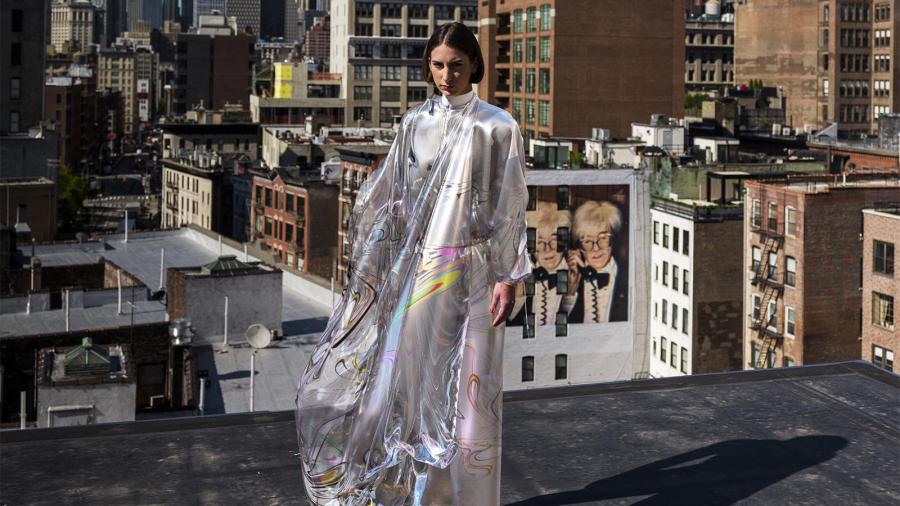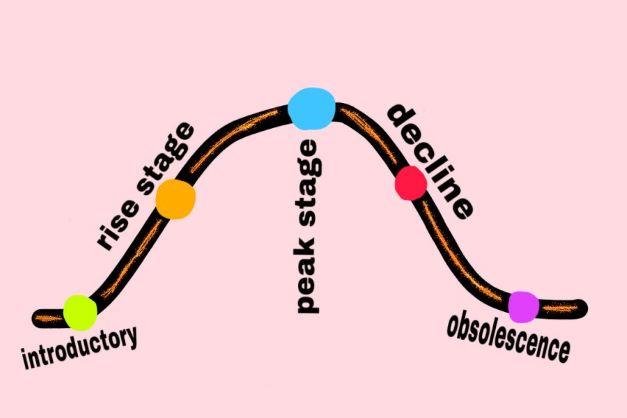
Is Digital Couture the next fashion breakthrough?
Digital couture sounds like something that only exists in those sci-fi movies from the 90s. However, the concept came alive in 2018. With a major breakthrough in 2020 when The Fabrikant, a Dutch design company, released their Iridescence Digi-Couture Dress. It sold for an astonishing 9500 dollars. Augmented reality could have a big impact on consumer culture. With influencers already promoting fast fashion in the digital realm, why not take it a step further? Especially since the fashion industry brings about 8-10 percent of greenhouse gas emissions (UNEP, 2021).
In this article we explore digital fashion and the impact it could have on influencer culture. Moreover, we also look at the pros and cons of digital couture and look at the amazing designs.
How Digital Couture works
There are multiple steps a designer has to take in order to create a digital garment. The first obvious step is to get an idea of what the piece will look like. Then comes the sketching, finding the right textures, creating a virtual mannequin and a 3D model of the garment, the finishing touches and lastly rendering. Voilà! A new virtual garment is created.
The Scandinavian fashion brand Carlings launched their digital collection in 2018. (See figure 1) They were one of the first brands to launch clothing you can't technically wear. The clothing had an average price point of $20 per item and upon purchase you had to send them a photo on which the item was digitally edited. Afterwards, the picture is posted on Instagram and you can show off your new fit to your followers. You don't even need to get dressed.

Figure 1 - Carlings' Digital Collection 2018.
In the following years, the technology behind digital fashion has rapidly improved. And, after The Fabrikant going viral with their dress it became much more popular. At first glance I couldn’t even tell this dress was fake. (See figure 2)

Figure 2 - Iridescence dress by The Fabrikant.
Digital fashion floats somewhere between deepfakes and cheap fakes. Using both technically sophisticated and exceedingly simple techniques (Paris & Donovan, 2018). It all depends on the artist’s resources and skill set. When comparing the garments of The Fabrikant and Carlings there is a big difference in quality. Similar to offline fashion there is a clear distinction between haute couture and low-end clothing. This is also highlighted by the price point; Carlings sold their items for a low price of $20 and The Fabrikant's dress is worth $9480 more. Interestingly, the first digital clothing items were accessible to the average consumer. And it was only after luxury brands hopped onto this trend that high-end digital fashion emerged.
”A new cult is rising. The digital world is coming and we are no longer bound to physical space.'' -The Fabrikant
Since the technology has been improved the clothes are more realistic and appealing. The first garments looked more photoshopped but already had a futuristic look to them. Moreover, designers can experiment with new materials and textures. For example, they can now use silver, dragon skin and other materials that can't be used in the physical world. And, with the technology being more accessible, budding designers can now also explore digital fashion. (See figure 3)

Figure 3 - Fashion Design student ''Rozepaars'' in their digital dress.
Pros of digital couture
Most fashion influencers promote online stores such as ASOS , H&M , FashionNova and many more. One thing these stores have in common is that they sell fast-fashion. Low prices, cheap labour, bad quality and mass production is what makes this type of fashion fast. Following the newest trends is what makes someone fashionable, interesting and current. (See figure 4) Wearing clothes from Spring 2020 makes you outdated and this is not done as a fashion blogger. It is estimated that the global fashion industry produces 150 billion garments a year, of which nearly three-fifths gets thrown away within years of being made. Needless to say, this is extremely bad for the environment. This is due to our shopping behaviour, which is influenced by the fashion bloggers we follow.

Figure 4- The life cycle of a fashion trend.
Influencers post on social media platforms such as Instagram, YouTube and TikTok. Social media users seek entertainment and relatable content. They engage with it by liking a photo, commenting under a video or by following their favourite influencer. Usually, the online creator seems authentic and relatable, which gives them social value. When an online creator is successful, they have a bigger following and reach. Followers look up to them and get inspiration from the influencer. Hence the term influencer, they influence what people buy and wear (García-Rapp & Roca-Cuberes, 2017).
Brands know that social media users get influenced by these content creators. If someone sees their favourite influencer wear a certain item, chance is that they’ll purchase it. By offering sponsorships and contracts to these influencers, brands get a bigger reach. Moreover, fashion hauls are popular. The influencers show the clothes they bought and give their opinions. Also fashion bloggers rarely repeat an outfit and this is probably why trends die out quickly. After a while it gets boring and a new trend is created. This is why so much clothing gets thrown out. It's a cycle we need to break. So digital fashion seems to be a solution. If online content creators were to make a switch to digital clothes it could potentially have a major impact.
The cons of digital fashion
Digital clothing could change our relationship with fashion. Especially relating to social media. Fashion bloggers post new fits every day and a lot of the clothes are barely worn. New trends would keep emerging and the social media users can still get inspired by the fits. Which means that less clothing would go to the landfill and the production of clothing could be reduced. If digital fashion were to replace this, it could be a good sustainable solution. However, there is also a downside to ‘wearing’ digital clothes.
Firstly, the garments only exist in the digital realm. This means that you can’t physically wear it and go outside with your new outfit. It merely exists on your Instagram account, despite the fact that you paid for it. Moreover, you pay for it to be edited in one picture. Therefore, you can’t ‘wear’ it more often.
Secondly, during a live panel discussion from Favourup the question was asked why online creators don’t wear more digital fashion. Since their platform already exists online. However, not everyone felt comfortable with the idea. It was argued that it would make the content deceitful because the garments don’t exist and are therefore fake. As mentioned before, it is important to the audience that an influencer is authentic and trustworthy. Some might think the garment is ‘real’ and this could disappoint the social media user.
Thirdly, digital couture can also have a negative impact on the environment. Some designers sell their pieces using Non-Fungible Tokens. It is basically a digital certificate of authenticity, similar to when you buy an authentic artwork, showing that the digital asset is unique and not a copy. One doesn’t accidentally want to buy a knockoff version. It seems like a good way to sell the garments.
''Potential fixes to the NFT climate pollution problem are in the works.'' - Blockchain for Climate Foundation
Sadly, there is a huge climate controversy surrounding NFTs. Cryptocurrencies use a lot of energy to operate. So, it is responsible for millions of tons of greenhouse gas emissions as well. It is exactly what we want to prevent. The fashion industry is already harming our planet and digital fashion would only make it worse. Some designers claim that they can invest the money into sustainable projects to reduce the impact of NFTs. But not everyone is convinced by this argument (Calma 2021).
To sum up, there are numerous cons when it comes to digital fashion. It hasn’t become quite mainstream yet and people question whether they should invest. This is also a cause for heated discussions and ethical questions about digi-couture. There is much that still needs to be explored regarding this concept. Especially when considering crypto-currency and its environmental impact. If we continue using NFTs it could cause a lot of other problems. It would also mean that digital fashion is perhaps not the sustainable answer we are looking for. Luckily, only the major brands are using NFTs at this moment. So, there is still hope for the digital fashion realm.
Concluding thoughts
Digital couture opens up a new world of possibilities for fashion design. No longer limited by the physical world, creators can go wild with their designs. Digital fashion has many benefits if it becomes popular, especially regarding influencer culture and sustainability. It could lead to a decrease in clothing production and consumption. And, influencers wouldn't need to receive physical garments to promote. The items can easily be edited on pictures when promoting a fashion brand. Their social media following also wouldn't be dissappointed by the bad quality of fast-fashion items. Even if influencers were to make only a few digital fashion posts a year it could have an impact. Moreover, digital fashion could become a major trend and make physical clothing boring. People will hop onto the trend and disregard cheap fast-fashion items when they post online.
The negative aspects of digital fashion depend on how you look at it. It can be argued that it only adds to how 'fake' social media is and that it is deceitful to the audience. And, that the border between real and fake content is fading even more. However, the influencer could mention it is a digital item in the caption. That way, the audience would recognise the garment as 'fake' and not be dissappointed when they look for it online. Another argument against this new technology is how luxury brands use NFTs when selling their collections. The energy used also emits tons of greenhouse gasses, which only adds to the environmental impact the fashion industry makes.
However, most fashion influencers post outfits to inspire their audience. And, with an expectation of constantly coming up with new looks, digital fashion sounds like a good solution. The closets of content creators won't be filled to the brim and there are less barely worn items. Their followers don't need to have the exact same clothing and they can still create a similar vibe with physical clothing. As long as the digital fashion industry won't solely rely on NFTs it will be a sustainable concept, just not a solution. At the very least, digital fashion challenges our view of fashion and 'fakeness'. And we can now wear dragon skin garments instead of beloved snake skin prints.
References
Calma, J. (2021) THE CLIMATE CONTROVERSY SWIRLING AROUND NFTS. The Verge
García-Rapp, Florencia & Carles Roca-Cuberes (2017). Being an online celebrity: Norms and expectations of YouTube’s beauty community. First Monday 22(7)
Paris, B. & Donovan, J. (2018) Deepfakes and cheap fakes the manipulation of audio and visual evidence. Data Society: University of California
UN Environment Programme. (n.d.) Putting the brakes on fast-fashion. United Nations.